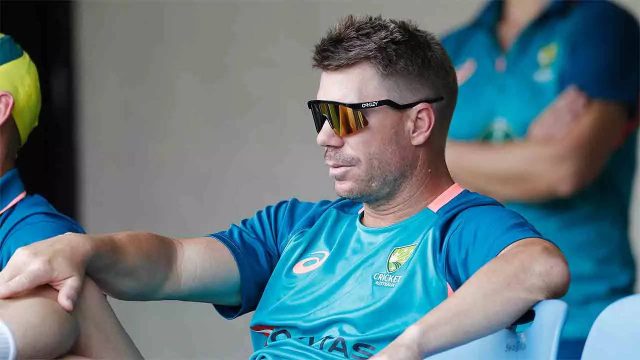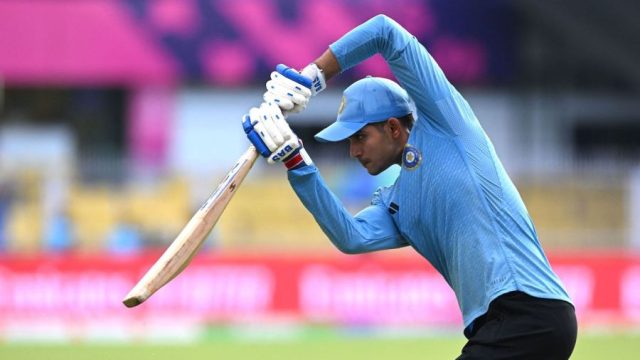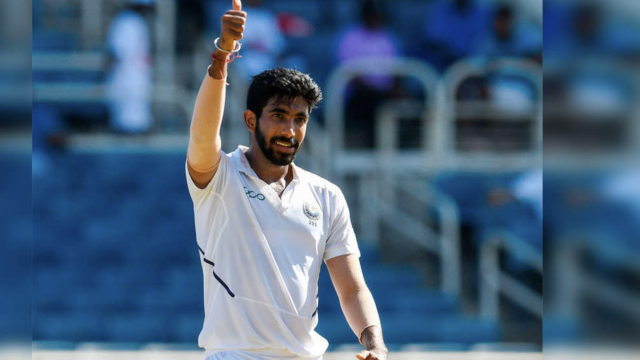What is an Over in Cricket?

What is an over in cricket? In cricket, an over is a term that refers to a set of six legal deliveries bowled by a bowler towards a batsman. Each delivery presents an opportunity for the batsman to score runs, while also allowing the bowler and the fielding team to record a wicket. The number of overs in a match can vary depending on the type of match being played.
An over is a crucial element of a cricket match, and it is used to measure the progress of the game. It is a unit of measurement that allows teams to keep track of the number of deliveries bowled, and the number of runs scored. The over also plays a critical role in determining the outcome of a match, as it can have a significant impact on the scoring rate and the number of wickets taken. Understanding the concept of an over is essential for anyone who wants to follow or play cricket.
What is an Over in Cricket?
Definition
In cricket, an over is a set of six deliveries or balls bowled by a single bowler from one end of the pitch to a batsman at the other end. The number of overs in a match depends on the format of the game, but typically, a limited-overs match has 50 overs per side, while a Test match has a maximum of 90 overs per day.
During an over, the fielding team tries to dismiss the batsman by getting him out, while the batting team tries to score runs by hitting the ball with the bat and running between the wickets. If the batsman hits the ball over the boundary without it touching the ground, he scores six runs, while if it bounces before going over, he scores four runs.
History of Overs in Cricket
The concept of overs in cricket can be traced back to the early days of the game in the 18th century. At that time, matches were played without any fixed number of overs, and each team bowled until they had taken all the wickets or the other team had scored enough runs to win.
In the late 19th century, the concept of overs was introduced to make the game more structured and predictable. Initially, an over consisted of four deliveries, but this was later increased to six to allow bowlers to build up a rhythm and to give batsmen a chance to settle in.
Today, overs are a fundamental part of the game of cricket, and they play a crucial role in determining the outcome of a match. By controlling the rate at which overs are bowled, teams can put pressure on the opposition and force them to take risks, which can lead to wickets and ultimately victory.
In conclusion, overs are a key component of the game of cricket, and they provide a structured and predictable framework for matches. Whether you are a fan of the game or a player, understanding the concept of overs is essential to fully appreciate the nuances and strategies involved in this fascinating sport.
How Many Balls are in an Over?
In cricket, an over is a set of six balls bowled by a player called a bowler from one end of the pitch. Each bowler delivers six balls in succession to the batsman at the other end. The number of overs in a cricket match varies based on the format being played.
Limited Overs Cricket
In limited-overs cricket, each team faces a set number of overs, typically either 20 or 50. In Twenty20 (T20) cricket, each team faces 20 overs, while in One Day International (ODI) cricket, each team faces 50 overs. In both formats, each bowler can bowl a maximum of 10 overs.
Test Cricket
In Test cricket, there is no prescribed number of overs. However, as per the rule, 90 overs have to be played every day. On account of the inning change, 2 overs can be compromised. That means a minimum of 88 overs is required to call it a day. The captain of the batting team can declare their innings, which can also affect the number of overs played.
In Test cricket, each bowler can bowl a maximum of 20 overs in an innings. If the match goes into a fifth day, the number of overs can be extended to make up for lost time due to rain or other interruptions.
In case a bowler bowls a no-ball or a wide ball, an extra delivery will be added to the end of the over. If a bowler bowls more than one no-ball or wide ball in an over, the extra deliveries will be added to the end of the over until a legal delivery is bowled.
Overall, an over in cricket consists of six balls, bowled by a single bowler from one end of the pitch to the batsman at the other end. The number of overs played in a cricket match depends on the format being played, with limited-overs cricket having a set number of overs, and Test cricket having a minimum number of overs required per day.
What Happens During an Over?
In cricket, an over consists of six legal deliveries bowled from one end of a cricket pitch to the player batting at the other end. The over is bowled by a single bowler, and during this time, several things happen. This section will explore what happens during an over, including bowling an over, scoring runs during an over, wides and no-balls.
Bowling an Over
During an over, the bowler runs up to the crease and bowls six legal deliveries to the batsman at the other end of the pitch. The bowler must deliver the ball within the rules of cricket, including not bowling a wide or no-ball. The umpire keeps a close eye on the bowler’s actions to ensure they are not breaking any rules.
Scoring Runs During an Over
The batsman has the opportunity to score runs during an over. Each delivery provides an opportunity for the batsman to score one or multiple runs. The number of runs scored during an over depends on the skill of the batsman and the fielding team’s strategy. The fielding team tries to prevent the batsman from scoring runs by fielding the ball and returning it to the bowler as quickly as possible.
Wides and No-Balls
A delivery is not counted against the over in the case of a wide ball, no ball, or dead ball. A wide ball is a delivery that is outside the batsman’s reach and is called by the umpire. A no ball is a delivery that is illegal, such as the bowler overstepping the crease or throwing the ball. A dead ball is a delivery that is not counted as a legal delivery, such as when the ball hits the batsman or the umpire.
During an over, the fielding team tries to prevent the batsman from scoring runs, while the batsman tries to score as many runs as possible. The captain of the fielding team strategizes to place fielders in the best positions to catch the ball and prevent runs. The batsman tries to hit the ball in areas where the fielders are not positioned.
In limited overs cricket, the death overs are the final overs of an innings, during which the batting team tries to score as many runs as possible. The fielding team tries to take wickets and prevent runs. In test cricket, the captain of the fielding team can declare an over, which means the bowler can bowl as many deliveries as they like.
Overall, an over in cricket is an essential part of the game that provides an opportunity for the fielding team to take wickets and for the batsman to score runs. The rules around wides and no-balls can have a significant impact on the outcome of the match, and both teams must be aware of the laws of cricket.
What is an Over in Cricket? – Key Takeaways
In conclusion, an over in cricket refers to a set of six legal deliveries from a bowler to a batsman. After the completion of an over, the umpire declares “Over,” and an over change occurs. During an over change, the batsman, bowler, and wicketkeeper swap sides of the pitch. The batting side swaps batsman, and the fielding side swap bowlers.
A maiden over is an over in which no runs are scored that count against the bowler. Leg byes and byes may be scored as they are not counted against the bowler. A bowler can bowl up to 10 overs in a limited-overs match, while there is no limit on the number of overs a bowler can bowl in a Test match.
It is essential to note that cricket is a sport that requires patience, skill, and strategy. Understanding the concept of an over is crucial for both the batting and fielding teams as it can impact the outcome of the game. A well-bowled over can put pressure on the batting team, while a poorly bowled over can give the batting team an advantage.
Overall, an over is a fundamental aspect of cricket, and a good understanding of it can enhance one’s enjoyment of the game.
What is an Over in Cricket? – FAQs
What is an over in cricket?
An over is a set of six legal deliveries bowled by a single bowler from one end of the pitch to the other.
Why is an over important in cricket?
Overs are important because they determine the number of legal deliveries that a team has to score runs and take wickets. The total number of overs in a match is predetermined, and each team gets to bowl an equal number of overs.
How is an over counted in cricket?
Each time a bowler delivers a legal ball, it counts as one ball in the over. Once the bowler has delivered six legal balls, the over is complete, and another bowler takes over from the other end of the pitch.
What happens if a bowler bowls a no-ball or a wide in an over?
If a bowler bowls a no-ball or a wide, it does not count as a legal delivery, and the over continues until six legal balls are bowled. However, the extra run(s) scored from the no-ball or wide are added to the batting team’s score.
What happens if a bowler bowls a short-pitched delivery or a full toss in an over?
If a bowler bowls a short-pitched delivery or a full toss above waist height, it is considered a no-ball and does not count as a legal delivery. The batting team is awarded one run, and the bowler has to bowl another delivery.
How many overs are there in a cricket match?
The number of overs in a cricket match depends on the format of the game. In Test matches, each team gets to bowl 90 overs in a day, while in One Day Internationals (ODIs), each team gets to bowl 50 overs. In Twenty20 (T20) matches, each team gets to bowl 20 overs.





